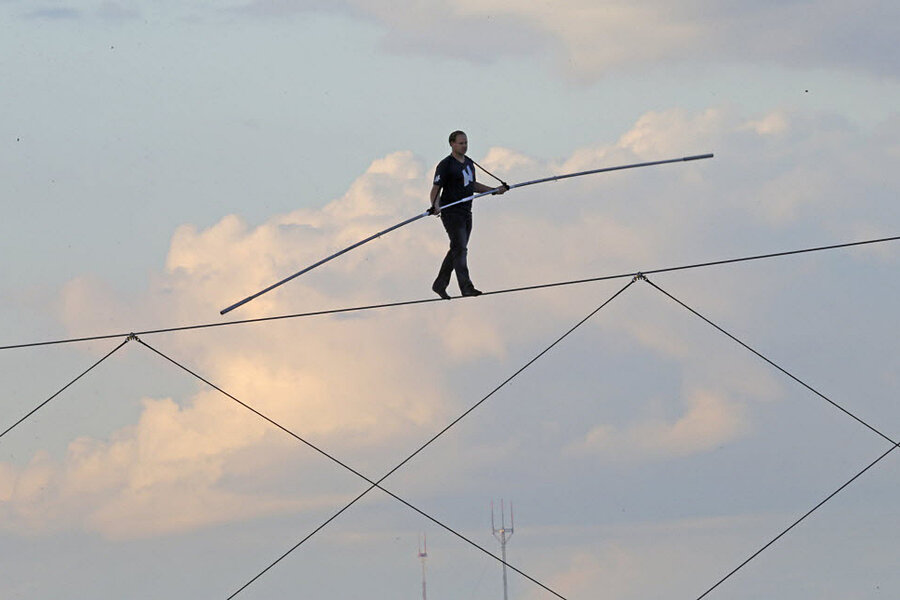In age of extreme sports, digital draws, old-fashioned tightrope stunts still enthrall
Loading...
Nik Wallenda, the self-proclaimed "King of the High Wire," completed his longest-ever tightrope walk at the Wisconsin State Fair on Tuesday evening.
It took 33 minutes for Mr. Wallenda to cross a 1,560-foot wire strung ten stories above the Milwaukee Mile racetrack near the state fair grounds. The wire was no wider than a US nickel.
As he moved slowly across the tightrope, he talked to the crowd about his training process, his family, and the risks involved in his feats.
"Safety is a key component to what I do. People say I'm crazy and I can understand that," Wallenda told the approximately 1,000 spectators below, according to the Milwaukee Journal Sentinel.
He ended by giving a thumbs-up to the crowd, which rewarded him with a wild ovation.
Wallenda holds nine Guinness World Records for his highwire feats, which include walking between two Chicago skyscrapers while blindfolded and across Niagara Falls and the Grand Canyon. In April, he successfully completed a walk across the rim of the 400-foot Orlando Eye ferris wheel in Florida.
The native Floridian and father of three is a seventh-generation member of the famous Flying Wallendas family of acrobats. He spent much of his childhood performing with his family at fairs and circuses, and made his professional tightrope walking debut at age 13.
In 2011, Wallenda and his mother successfully recreated the wire walk in Puerto Rico that killed his great-grandfather, Karl Wallenda, in 1978.
“I do it because I love it,” Wallenda said in an 2014 interview with Esquire. “My great grandfather Karl Wallenda said it best when he said, ‘Life is on the wire, and everything else is just waiting.’ Hard for you to understand, but, just like Tiger Woods plays golf and Michael Jordan plays basketball, the Wallendas walk wires.”
This report includes materials from the Associated Press and Reuters.








